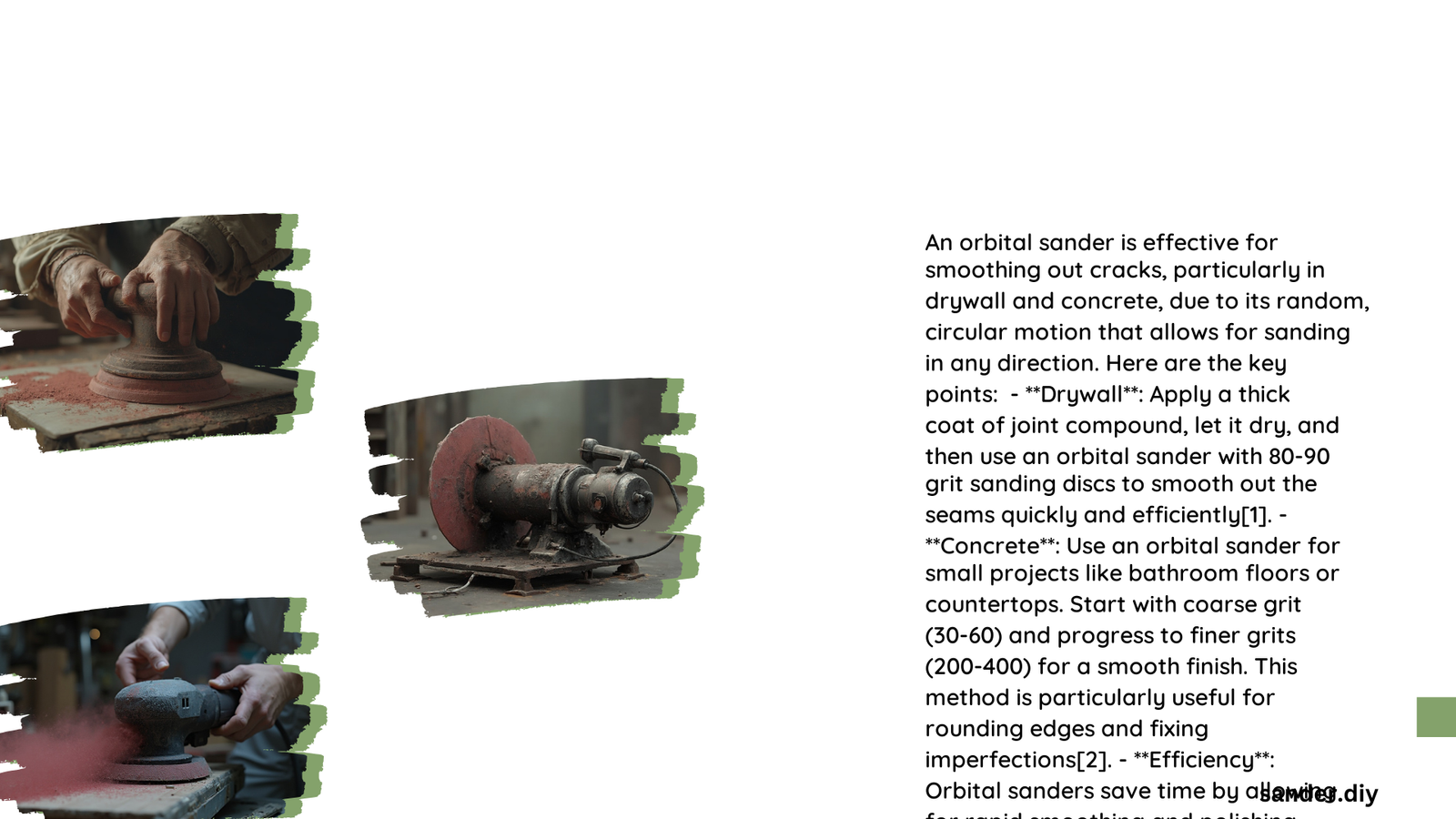Orbital sanders are highly effective tools for smoothing out cracks in various surfaces. Their unique design and features make them particularly suitable for this task, offering efficiency, precision, and a high-quality finish. This article explores the effectiveness of orbital sanders in crack repair, comparing them to traditional methods and providing insights on best practices for optimal results.
Is an Orbital Sander Effective for Crack Repair?
Orbital sanders excel at smoothing out cracks due to their unique features:
- Variable orbit diameter for adjustable aggression
- Ergonomic design for reduced user fatigue
- High-speed sanding for efficient material removal
- Uniform sanding motion to prevent swirl marks
These features contribute to faster completion times and professional-grade finishes, making orbital sanders a preferred choice for crack repair.
What Grit Sandpaper Should Be Used for Smoothing Cracks?

Choosing the right grit sandpaper is crucial for effective crack repair:
- Coarse grits (80-120): Initial material removal
- Medium grits (150-220): Further smoothing
- Fine grits (320-400): Final polishing
Proper grit progression ensures optimal results:
| Grit Range | Purpose |
|---|---|
| 80-120 | Remove large imperfections |
| 150-220 | Smooth out surface |
| 320-400 | Achieve polished finish |
Always clean the surface between grit changes for best results.
How Does an Orbital Sander Compare to Hand Sanding for Cracks?
Orbital sanders offer several advantages over hand sanding:
- Increased efficiency and speed
- More consistent and uniform finish
- Reduced user fatigue
However, they also have some drawbacks:
- Higher initial cost
- Require some skill to use effectively
Hand sanding, while more affordable and precise for small areas, is significantly slower and more labor-intensive.
What Are Common User Experiences with Orbital Sanders for Crack Repair?
Users generally report high satisfaction with orbital sanders for crack repair. Common themes include:
- Appreciation for time savings and efficiency
- Improved finish quality compared to hand sanding
- Importance of proper technique and pressure control
Best practices recommended by users:
- Use interface pads for better surface conformity
- Gradually progress through grit sizes
- Maintain the sander and change sandpaper regularly
Can Orbital Sanders Damage Surfaces When Smoothing Cracks?
While orbital sanders are generally safe, improper use can lead to surface damage:
- Excessive pressure: Can cause deep scratches or gouges
- Incorrect grit selection: May result in uneven surfaces
- Prolonged sanding in one spot: Can create depressions
To prevent damage:
- Apply light, even pressure
- Start with appropriate grit and progress gradually
- Keep the sander moving across the surface
What Safety Precautions Should Be Taken When Using an Orbital Sander?
Safety is paramount when using an orbital sander:
- Wear protective gear:
- Safety goggles
- Dust mask
- Hearing protection
- Ensure proper ventilation in the work area
- Secure loose clothing and tie back long hair
- Disconnect power when changing sandpaper
Following these precautions minimizes risks associated with dust, noise, and potential accidents.
How to Achieve the Best Results with an Orbital Sander for Crack Repair?
To maximize the effectiveness of an orbital sander for crack repair:
- Prepare the surface thoroughly
- Choose the right sandpaper grit sequence
- Maintain consistent, light pressure
- Keep the sander moving to prevent uneven spots
- Clean between grit changes
- Finish with progressively finer grits for a smooth surface
By following these steps, you can achieve professional-quality results in crack repair using an orbital sander.
References:
1. https://fastplus.eu/blogs/sanding-polishing/how-to-use-orbital-sander
2. https://www.youtube.com/watch?v=Fr_nOKYPVxI
3. https://www.bigrentz.com/blog/how-to-sand-concrete
